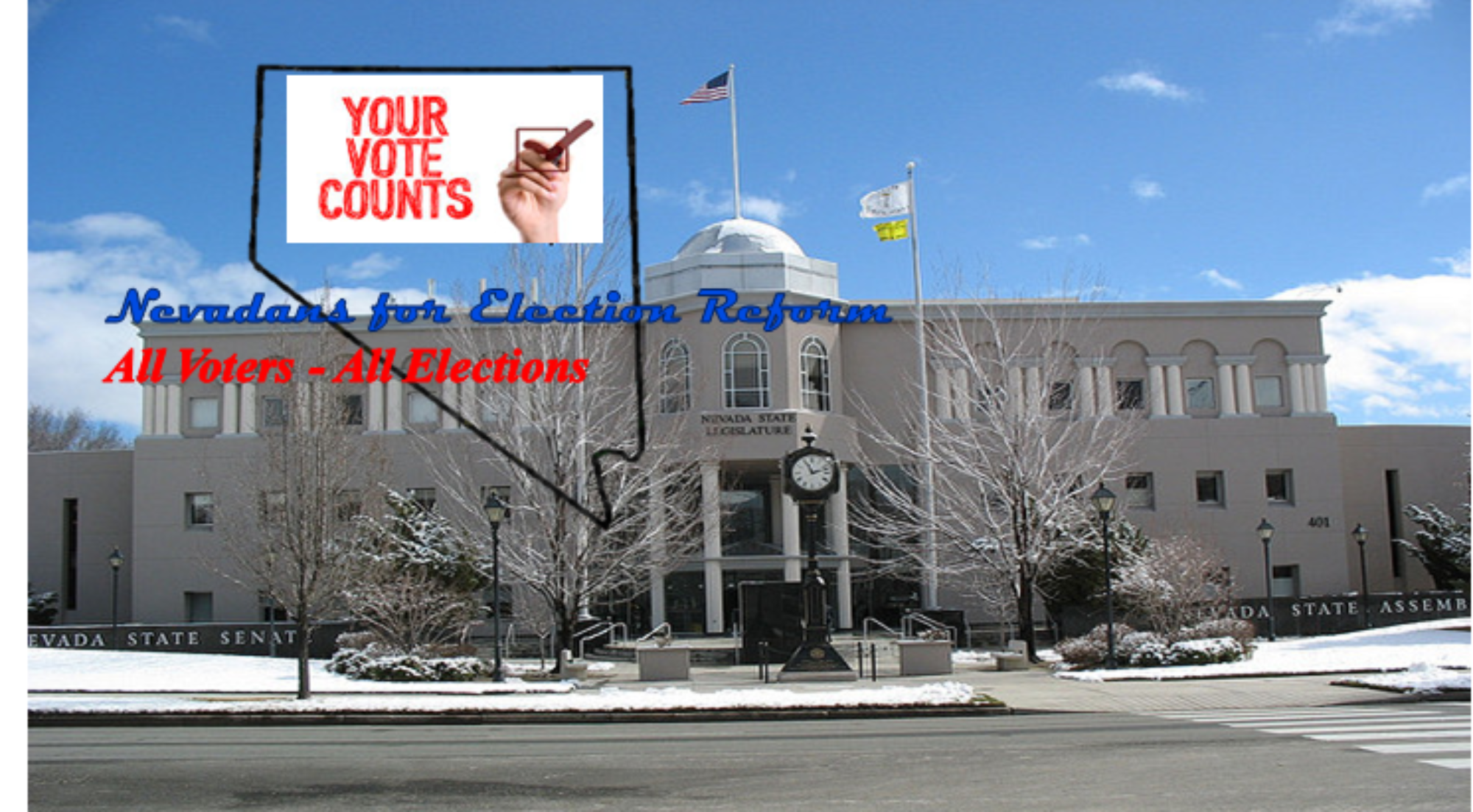There has been a lot of media attention recently concerning a change to Nevada election law enacted by the 2015 Nevada legislature. The change focused on how an elected official is chosen when only one political party has candidates vying for a particular office.
Before the change, if only two candidates of the same party were running for the office, both candidates would appear on the general election ballot foregoing the primary election. If more than two candidates from the same party were the only ones running, the top two finishers in the closed primary election would advance to the general election. This would allow all voters in a legislative district to vote on who represented them in the legislative body.
Under the change, all candidates from the same political party will compete in a primary election with the winner advancing to the general election as an unopposed candidate. Supporters of this change say it is the political party’s right to select its nominee and that if voters registered in another party or as non-partisan want to participate they should change their voter registration to the party with candidates. Opponents of the change say all voters of the district should have a voice in who represents them without having to change party. Unlike when a candidate is unopposed; only one person filed to run for the office, two from the same party still represent a choice that should be presented in the general election. This is different from a party choosing its nominee.
In spite of all the back and forth, there is agreement – changes to our election process are needed.
The author of the change, State Senator James Settelmeyer (R – Minden), as vice-chair of the Senate Legislative Operations and Elections Committee along with committee chair State Senator Patricia Farley (R – Las Vegas) were the sponsors (officially it was a committee bill) of the original bill calling for a modified blanket primary system. Speaking of the original bill, Senator Settelmeyer was quoted in an article by Las Vegas Review Journal political reporter Sandra Chereb as saying the concept “is to allow everyone to vote in the primary.” He further said “It’s good to give people choices,” For the most recent article Senator Settelmeyer also stated “I would still support and vote for the bill that I brought,” he said. “To me it’s about the concept of having bold choices in which way we wish to go forward.” Senator Farely added “You want to get everybody’s voice in the process. I would like to see it open up in the primary. If I’m a registered independent and I like a Republican, I shouldn’t have to change my party affiliation.”
In an editorial supporting the change published on April 12, 2016 in the Las Vegas Review Journal the editors closed by saying “To encourage both major parties to field legislative candidates across the board, stop drawing district boundaries to guarantee a predictable outcome. Not only would both Democrats and Republicans have an incentive to field qualified candidates, voters of all affiliations would be more likely to get out and cast a ballot.” The drawing of legislative boundaries is a major issue for proponents of election reform. A bill to create a legislative advisory panel for reapportionment and redistricting was introduced in the 2015 session but failed to pass.
On April 12, 2016, I appeared on the Alan Stock Show on KXNT in Las Vegas. While Stock fully supports the current system, he closed by telling me we need “four strong political parties, Republican, Democratic, Conservative, and Liberal.” To achieve this would require going to multi-member legislative districts. Again, this is a major reform put forward by proponents of election reform.
Orrin Johnson, a political columnist contributing to the Reno Gazette Journal and another supporter of the 2015 change closed his April 17, 2016 column by saying, “I, for one, will be happy when political parties no longer enjoy any official sanction or recognition in our electoral procedures. The First Amendment, as it should, protects the rights of people to assemble into various organizations for political activism, but that doesn’t require us to have statutes with different rules for “major” or “minor” parties.” This sentiment is a driving force behind election reform.
In solving any problem, the first step is to determine if there are any areas of agreement, of common ground. Clearly there is agreement on the need for change in our political processes. Sandra Chereb, through her story highlighting the recent change to elections when only one party has candidates has brought this problem to the surface. Perhaps the Nevada Election Modernization and Reform Act, the catalyst for the original bill in 2015, is the vehicle to reach the solution.
